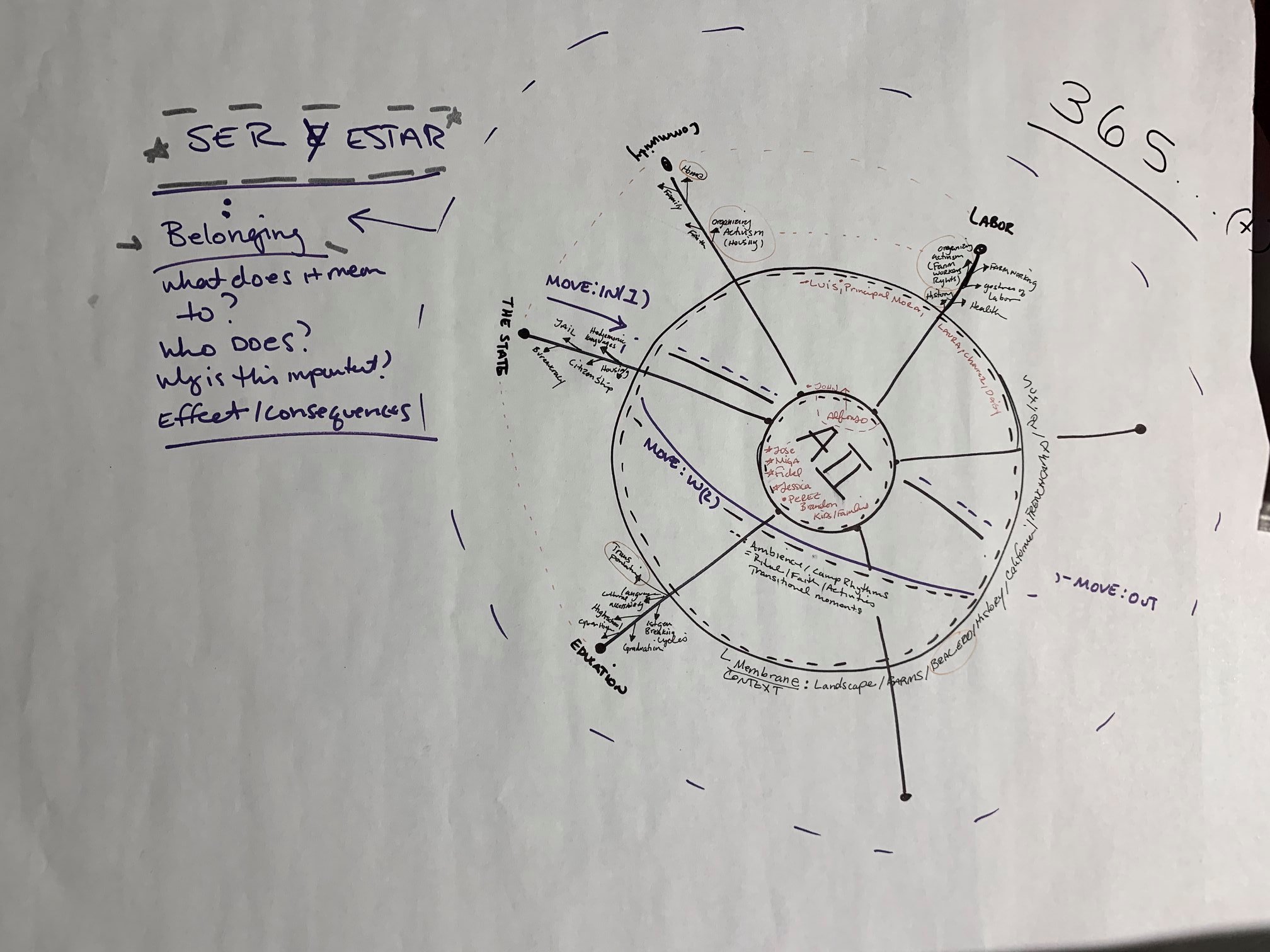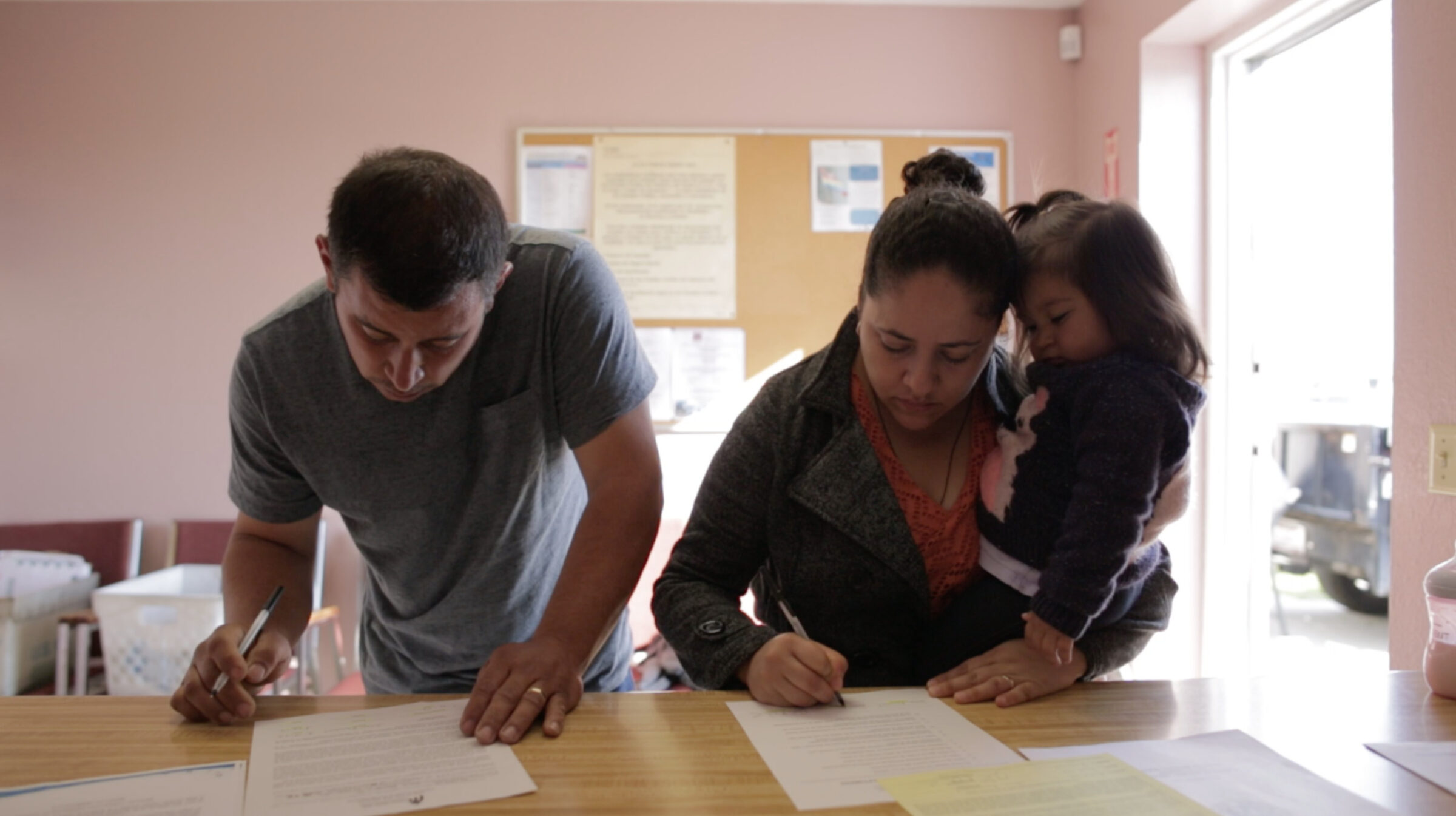Written by Aggie Ebrahimi Bazaz
In democratic theories, writes Dr. Elizabeth Cohen (2009), citizenship is typically postulated as a linear, finite journey from one, bounded political status (non-citizen), to another (citizen).
We see in this something close to the “familiar arc” of narrative storytelling which Simran Hans outlines: “three distinct [and bounded] components: setup, confrontation and denouement” through which a filmic hero moves, linearly, toward some specific resolution.
My feature-length documentary, Cómo Vivimos, aims to intervene in these constructions of linearity in an attempt to motivate new thinking on citizenship. Firstly, Cómo Vivimos aims to illustrate citizenship as an unbounded, contested gradient rather than binary. And we aim to do this in a way that is community-driven rather than character-driven, cyclical rather than linear. We suggest that structures of oppression are consistently and collectively negotiated, not resolved once and for all by an individual agent.
Here is the first paper edit of the film. “This is our brain,” says Alexis McCrimmon, as she sketches circles and nodes, translating our thoughts on the film’s themes and analytical framework into a visual landscape. Alexis has been my steadfast, editorial thought partner via my residency at the Wexner Center Film / Video Studio where we have worked together for two to four weeks a year for the past three years to give thoughtful shape to nearly 300 hours of footage recorded over 4 years.

In the center, the nucleus (“Aii”), is the Artesi II Migrant Family Housing Center where the film takes place. Located in California’s fertile agricultural belt, the San Joaquin Valley, Artesi II provides subsidized 2, 3, and 4-bedroom apartments for rent to 100 Mexican-American, farmworking families. Due to state regulations, resident families must vacate their apartments yearly and live outside the centers for at least three months to be eligible for residence in the centers the following spring. Most families return to Mexico for the off-season and most families have been repeating this cycle for years, if not generations.
130 of the 148 youth in Artesi are natural-born U.S. citizens but are, per regulations, yearly leaving school for at least three months. They are thus denied a complete education and its access to social mobility, all of which citizenship would presumably provide .
Bisecting Artesi II in the image are lines representing a complex of “systems and structures which reinforce inequality” (Sonya Childress, “Beyond Empathy”). Those systems include: education; the decades-long intersection of immigration policies and agricultural labor; bureaucratic state power; and criminalization systems (Artesi’s backyard neighbor is the county jail. Until 2014, the county sheriff would notify immigration authorities if anyone held at the jail could be transferred for deportation). These, along with systems of kinship and mutual aid, create the “membrane,” the ecosystem in which Artesi II functions.
I think of the unnamed nodes as the representational system, a system of which I myself am an agent as a documentarian. Part of the work of this film is to avoid replicating the subject-making apparatus of the state.
The membrane is a relational model. It holds that no individual’s experience is disconnected from the larger web of factors and networks which make contact with that experience. It is in this way also a feminist model, holding that the personal is political.
The edit of this film has been years long as we work to develop a visual and structural language of embeddedness that can illustrate the machinations of the state while centering community members and their daily, often poetic acts of resistance.

In a film like this, which seeks something other than standard, linear trajectories, it is essential to have support from like-minded colleagues and collaborators who see value in the method. I am so grateful to partners like the Wexner Center and iMEdD for seeing value in this work, value in the ecosystem approach, and supporting us to advance the film toward its expressive possibilities.
“Como Vivimos” participates in the 3rd cycle of the iMEdD incubator program.